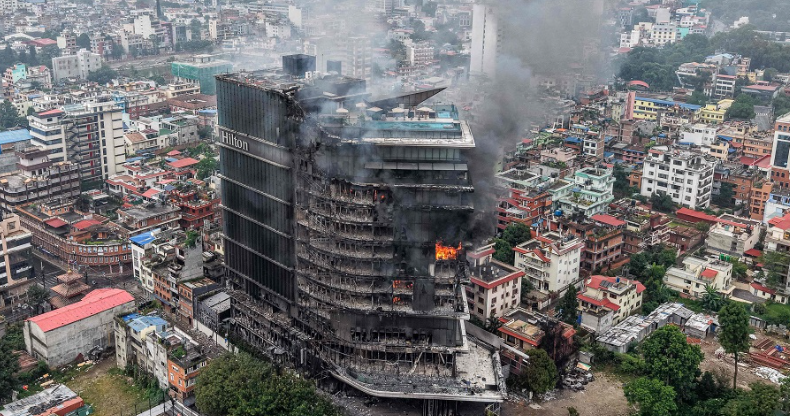When it comes to cities that balance vibrant tourism with an aura of calm, few manage this feat better than Kyoto, Japan. Despite its popularity, Kyoto has been recognized as one of the world’s most tranquil destinations, a rare jewel where serenity and cultural richness go hand in hand.
Kyoto’s Remarkable Ranking Among Tranquil Destinations
According to a recent study conducted by British travel company Travelbag, which evaluated over 30 locations globally, Kyoto secured an impressive fourth place in the ranking of the world’s most tranquil destinations for 2025. This ranking considers critical factors such as noise pollution, light pollution, overall cleanliness, travel congestion, and the quality of green spaces — elements that contribute hugely to a visitor’s ability to relax and disconnect from the hectic pace of daily life.
First place was awarded to Queenstown, New Zealand, celebrated for its pristine parks and very low pollution levels. Seychelles Islands followed in second, and Cairns, Australia, in third. Kyoto’s inclusion in this elite list is particularly surprising given its status as a major tourist hub.
Despite its bustling reputation, Kyoto maintains a remarkable commitment to cleanliness and quietude. The city’s classical Buddhist temples, beautifully manicured gardens, Shinto shrines, and traditional wooden townhouses create an environment of extraordinary tranquility. Even Tokyo, Japan’s thriving capital, earned a respectable 11th place, thanks to its numerous green areas and rigorous cleanliness policies that keep streets free of litter and noise.
Factors Contributing to Kyoto’s Tranquility
- Green Spaces: Kyoto is home to several classical gardens and temple precincts that offer peaceful retreats for residents and travelers alike.
- Sound Management: Strict regulations and urban planning help keep noise pollution to a minimum inside the city.
- Cleanliness: Cultural values emphasizing public cleanliness ensure that streets and public venues remain immaculate.
- Travel Congestion Control: Efficient public transportation and pedestrian-friendly designs reduce traffic jams and related disturbances.
A Glimpse into Kyoto’s Historical and Cultural Background
Kyoto has a deep-rooted history as Japan’s former imperial capital, one that dates back over a millennium. Its legacy is woven into every corner of the city, preserved through its temples, palaces, and an architecture style that reveres nature and simplicity alike. Historically, Kyoto served as a cradle of Japanese arts, culture, and religion, with influences from the Ashikaga shoguns who promoted Zen Buddhism, evident in landmarks like the Katsura Detached Palace and the Silver Pavilion.
Over time, Kyoto evolved not only as a seat of imperial power but also as a center for traditional crafts such as silk weaving and pottery. Even modern development has maintained a balance, preserving the city’s essence through careful renovation rather than overwhelming modernization.
The post-World War II era witnessed renewed efforts in preserving Kyoto’s cultural sites — a decision underscored by its exemption from bombing, which left its invaluable shrines and temples intact. Today, visitors can immerse themselves in a cityscape that harmoniously blends the past and present.
Kyoto’s Environmental and Social Strategies
Kyoto’s exemplary status among tranquil cities extends beyond aesthetics. The city also emphasizes environmental stewardship, incorporating green urban planning and sustainable initiatives to reduce pollution levels and maintain air quality. Socially, it manages to meld a bustling international community with respectful collective norms, all contributing to the calm urban rhythm.
The Importance of Tranquility in Global Tourism
In the contemporary world of travel, tranquility is becoming an increasingly sought-after quality among tourists. As urban noise, pollution, and overcrowding escalate worldwide, destinations offering peace and a chance to unwind provide vital refuges. Kyoto’s position in this trend spotlights how cultural heritage and modern sustainability practices can elevate a city’s appeal.
Tranquil destinations encourage deeper engagement with surroundings, fostering meaningful travel experiences that blend culture, nature, and quiet reflection. This shift in tourist preference favors places that care for the environment and respect visitor well-being.
Table: Top 5 Tranquil Destinations in 2025 by Travelbag
| Rank | Destination | Key Attributes |
|---|---|---|
| 1 | Queenstown, New Zealand | Pristine parks, low pollution |
| 2 | Seychelles Islands | Secluded beaches, clear waters |
| 3 | Cairns, Australia | Natural green spaces, laid-back vibe |
| 4 | Kyoto, Japan | Buddhist temples, clean city, green areas |
| 5 | Destination X | Example attribute |
Privacy and Comfort in Travel: Kyoto as a Model
The ability to switch off in a travel destination depends heavily on environmental quality and thoughtful design. Kyoto exemplifies how urban environments can preserve tranquility despite tourist influxes. This achievement serves as a guiding example for other destinations seeking to enhance their appeal through sustainable, traveler-friendly approaches.
Connection to Sailing and Boat Rentals
While Kyoto itself is situated inland and does not center on maritime activities, its tranquil appeal echoes the kind of serene experiences sought by sailors and boating enthusiasts worldwide. Coastal cities known for yachting and boat charters often strive to maintain low pollution levels and preserve calm waters — elements that help create ideal conditions for enjoying the sea and ocean alike.
Places that rank highly for peacefulness, greenery, and cleanliness often become prime locations for marinas and sailing activities, attracting charter boats and yachts. Hence, the global interest in calm and clean destinations like Kyoto indirectly supports the larger trend towards sustainable tourism and boating activities, spanning seas, lakes, and gulfs across the world.
Summary and Conclusion
Kyoto’s recognition as one of the world’s most tranquil cities highlights a destination that harmoniously combines cultural wealth with environmental mindfulness. Despite its fame as a tourist hotspot, it offers an escape from noise and rush through its green spaces, historical sites, and dedication to cleanliness and order.
This balance is crucial for the future of tourism, as more travelers seek peaceful experiences interwoven with cultural heritage and natural beauty. In the broader context, destinations that manage to reduce pollution, control congestion, and maintain natural beauty will likely become magnets for visitors, including those interested in yacht charters and sailing activities along serene coastlines and clear waters.
For travelers inspired by serene destinations and looking to explore yachting, boating, or sailing on tranquil waters, GetBoat.com offers an international marketplace to rent sailing boats and yachts, catering to every taste and budget. Whether seeking calm lakes, vibrant marinas, or open oceans, it’s one of the best platforms for embracing the joys of yachting paired with peaceful travel experiences.

 Nepal’s Tourism Faces Setbacks After Targeted Attacks on Foreign Hotels">
Nepal’s Tourism Faces Setbacks After Targeted Attacks on Foreign Hotels">
